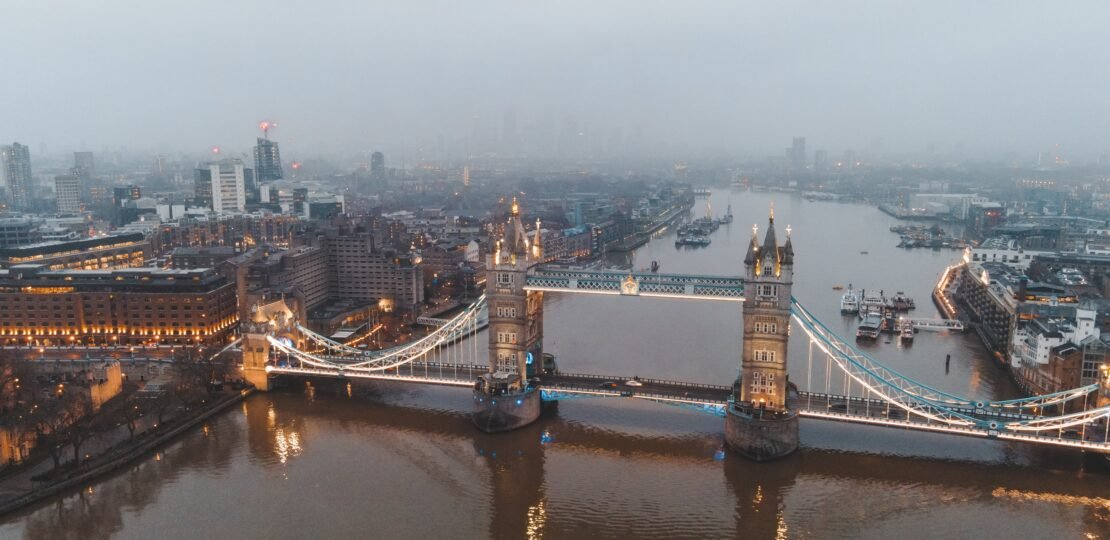
Introduction
Nestled on the banks of the River Thames, the Tower of London stands as a silent sentinel to over a thousand years of British history. With its origins rooted in the aftermath of the Norman Conquest, this iconic structure has evolved from a symbol of power and intimidation to a thriving tourist attraction, while retaining its profound role in shaping British history and monarchy.
Origins and Historical Uses
Foundation and Construction
The Tower of London’s history begins in the late 11th century when William the Conqueror ordered the construction of the White Tower. As a symbol of Norman military might, it served as both a defensive stronghold and a statement of dominance over the newly conquered lands.
Original Purpose

The original purpose of the Tower extended beyond defense. It functioned as a royal residence, showcasing the monarch’s authority. Its imposing presence along the riverbanks was a visual testament to the might of the Norman rulers.
Historical Uses
Over the centuries, the Tower took on multifaceted roles. It served as a royal prison, hosting illustrious prisoners such as Anne Boleyn, Catherine Howard, and Lady Jane Grey. The Tower was also the site of numerous executions, each adding layers to its dark and mysterious history. Additionally, it housed the Crown Jewels, a duty it still performs to this day, safeguarding these symbols of regal splendor.
Evolution into a Tourist Attraction
Transformation Over Time

The Tower of London underwent a transformation from a symbol of intimidation to a cherished historical site. In the 19th century, recognizing its historical significance, the Tower opened its gates to the public, allowing visitors to step back in time and explore its storied corridors.
Visitor Experience

Modern-day tourists are treated to a carefully curated experience. Guided tours take them through the Tower’s various buildings, offering insights into its history. Exhibitions showcase artifacts, bringing to life the stories of the individuals who once walked these ancient halls. The preservation efforts ensure that the Tower remains a living testament to its rich history.
Role in British History and Monarchy
Royal Residency

The Tower of London has played a crucial role in the lives of monarchs throughout history. It was a preferred royal residence during times of political unrest, providing both safety and symbolism. The presence of the reigning monarch in the Tower was a potent statement of authority.
Prison and Execution Site
The Tower’s role as a prison is infamous. The list of prisoners includes those who fell out of favor with the crown, facing accusations of treason or political intrigue. Executions within the Tower walls, marked by the chilling scaffold sites, left an indelible mark on its history.
Cultural and Symbolic Significance
Beyond its practical uses, the Tower of London has embedded itself in British cultural identity. It is a symbol of continuity, witnessing events ranging from the Wars of the Roses to the execution of King Charles I. The Tower’s role in various ceremonies, including the annual Ceremony of the Keys, adds to its cultural and symbolic significance.
Modern Relevance and References
Preservation Efforts
The Historic Royal Palaces organization, responsible for the Tower’s upkeep, employs cutting-edge preservation techniques. This includes ongoing conservation projects, ensuring that the Tower stands for future generations as a living history book.
Contemporary Cultural Impact
In the digital age, the Tower of London continues to captivate global audiences. Social media platforms and virtual tours provide people worldwide the opportunity to explore its chambers and learn about its history. The Tower remains a popular setting for films, further embedding its image in popular culture.
Conclusion
As we traverse the annals of time through the corridors of the Tower of London, it becomes evident that this iconic structure is more than just bricks and mortar. It is a living testament to the ebb and flow of power, the resilience of British monarchy, and the enduring spirit of a nation. Whether you’re a history enthusiast or a casual visitor, the Tower of London invites you to witness the echoes of the past in every stone and shadow. As it continues to stand guard over the River Thames, the Tower remains a tangible connection to the heart of British history, drawing in visitors from across the globe.
Footnotes
- P. Brown, “The Tower of London,” Yale University Press, 2003.
- D. Smith, “The Norman Conquest: A Brief History,” Robinson, 2019.
- A. Weir, “The Six Wives of Henry VIII,” Grove Press, 2007.
- Historic Royal Palaces, “The Crown Jewels,” [Online]. Available: https://www.hrp.org.uk/tower-of-london/history-and-stories/the-crown-jewels/.
- The Tower of London, “History of the Tower of London,” [Online]. Available: https://www.hrp.org.uk/tower-of-london/history-and-stories/history/.
- J. Steane, “The Archaeology of Medieval England and Wales,” Routledge,
- The Tower of London, “Executions at the Tower of London,” [Online]. Available: https://www.hrp.org.uk/tower-of-london/history-and-stories/executions-at-the-tower-of-london/.
- Historic Royal Palaces, “Conservation and Preservation,” [Online]. Available: https://www.hrp.org.uk/about-us/what-we-do/conservation-and-preservation/.
RELATED POSTS
View all


